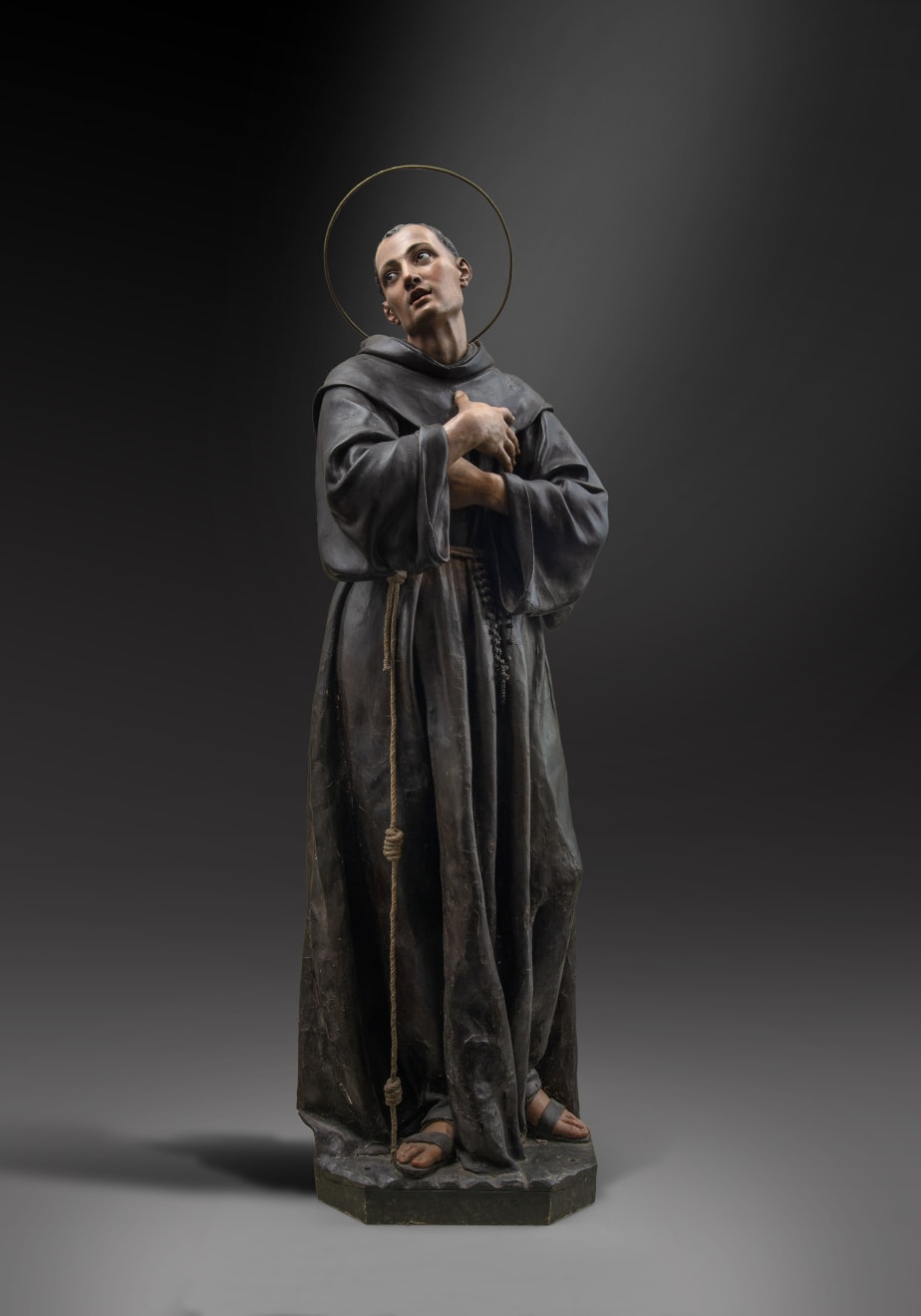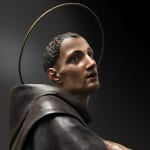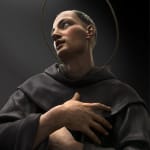Giacomo Colombo (Este 1663 – Naples 1713)
H 70 x W 19 2/3 x D 19 2/3 inch
Further images
San Pasquale Baylon
Naples, c 1720
Giacomo Colombo (Este 1663 – Naples 1713) and workshop
Polychrome carta pesta, glass and gilded bronze
H 177 x W 50 x D 50 cm
H 70 x W 19 2/3 x D 19 2/3 inch
This life-size polychrome carta pesta – or paper mache – figure of a male saint is a rare, exceptional and highly emotive survival of 18th century Neapolitan sculpture. When it was last offered for sale in 2017 its previous attribution to the school of the Spanish sculptor Francisco Salzillo (1707 -1783) led many experts on a wild goose chase trying to demonstrate a Spanish origin, however, the answer was rather simpler: the southern Italian cities of Naples and Lecce have had a very strong tradition for working in carta pesta since the early 18th century, moreover, a number of artists from this period - and one in particular – was also working precisely in this style.
There can be no doubt that the attribution to Salzillo’s school was an understandable one: the great naturalism of the pose, the dense modelling of the drapery and the hyper-realist skin tones on the face and hands – not to mention their expressiveness - reflect many of Salzillo’s greatest works (see for example his Saint Francis of Assisi in the National Museum of Sculpture, Valladolid; Fig. 1), however, in turning one’s eye to the Este-born, but Naples-resident, sculptor Giacomo Colombo one can find compelling stylistic and compositional elements that place the creation of the present piece to within Colombo’s workshop.
Indeed, his two figures of Saints Francis Paola and Anthony, documented as having been executed in 1719 and today in the Chiesa dell’Annunziata, Foggia (Fig. 2), bear noteworthy compositional, chromatic and stylistic parallels with the present figure. Similarly, Colombo’s figure of Saint Sebastian in la chiesa del Crocifisso, Lagonegro (in the region of Basilicata; Fig. 3) has a similar stocky frame, with a very distinctive square-shaped face, elegant, prominent, nose and full lips, as on the San Pasquale Baylon.
Further powerful similarities can also be drawn from Colombo’s half-length bust of Saint John of God in Santa Maria della Pace, which exhibits a closely comparable, squared, facial type with prominent nose, powerful jaw, identically modelled ears, muscular hands and densely folded drapery.
All these similarities point to the fact that the present life-size figure was unquestionably modelled from a prototype made by Colombo in around 1720 and then cast in carta pesta by a workshop assistant before being expertly painted.
The identification of the present saint as being San Pasquale Baylon is based on the unquestionable similarities between the present figure and other sculpted, painted and engraved images of the saint. One late 19th/ early 20th century engraving (Fig. 4) displays the saint, as a young, beardless, man, looking heavenwards wearing a Franciscan habit tied about the waist, with a rosary and a knotted rope, as on the present figure. San Pasquale Baylon (Torrehermosa, Spain, 16 May 1540 – Villareal, 17 May 1592) was a Spanish Roman Catholic lay from the Order of Friars Minor. He served as a shepherd alongside his father in his childhood and adolescence, but desired to enter the religious life. He was refused once but later was admitted as a Franciscan lay brother and became noted for his strict austerities, as well as his love for and compassion towards the sick. He was sent to counter the arguments of the Calvinists in France but was chased out and nearly killed by a mob. He was best known for his strong and deep devotion to the Eucharist.
His piety drew people from all over seeking his counsel, and at his death caused miracles that were reported at his tomb. The process for his canonization opened and in 1618 he was beatified; Pope Alexander VIII canonized him a saint on 16 October 1690.





